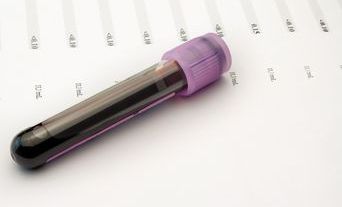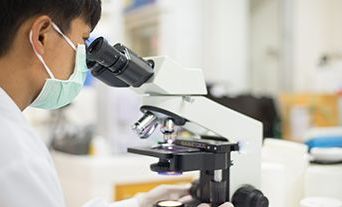The review by Adrian Bateman and colleagues on behalf of College’s Cellular Pathology Specialty Advisory Committee (SAC) provides a fascinating update on evolving roles and techniques used in patient care and to support public health. Traditional methods such as immunochemistry remain useful but updated technologies are being embraced, in particular the many applications of molecular pathology in diagnosis and determining prognosis in neoplastic disease.
There is well-deserved recognition of the College’s role in developing and maintaining cancer datasets and tissue pathways, which promote a consistent high-quality approach to managing pathology specimens and reporting neoplastic diagnoses, with currently over 40 datasets covering all major cancers.
The increasing complexity and workload places significant demands on cellular pathology services that can be hard to manage but, equally, makes the specialty interesting, exciting and attractive to new recruits. Rising to various challenges will enable the specialty to be responsive to change, harnessing new ways of working and technologies towards a truly modernised service that fits with the needs of patients within the evolving NHS. These include managing subspecialisation, supporting multidisciplinary team working, effectively deploying digital pathology, together with recognising and embracing new talent and the potential of scientific roles in partnership with medically trained pathologists.
The increasing complexity and workload places significant demands on cellular pathology services that can be hard to manage but, equally, makes the specialty interesting, exciting and attractive to new recruits.
The review concludes by noting and celebrating some key figures contributing to development of the specialty in the UK and the international arena. We aim to include these suggested giants from cellular pathology in our initiative at recognising ’60 people at 60’ as part of the College’s Diamond Jubilee celebrations – further details to be released later this year. The title for the article by Paul Cross and colleagues ‘Cytopathology – the dark art that came into the light’ itself speaks a thousand words. The highly informative and entertaining article describes the history, background and development of cytopathology as a specialty within a wider context. There is acknowledgement of traditional methods with the aptly described ‘bed rock of cellular morphology’ but with emphasis again on incorporation of the wider range of techniques for molecular and genetic testing.
The cervical screening programme is now well known to have prevented thousands of cases of cervical cancers in the UK. The development of the Breast Screening Programme ... emphasises the use of cytology as a mainstream diagnostic tool.
Some of the key successes highlighted are in the field of cervical cytology, including setting up the National Coordinating Network for Cervical Screening in 1985 with stringent attention to quality control. The cervical screening programme is now well known to have prevented thousands of cases of cervical cancers in the UK. The development of the Breast Screening Programme in the late 1980s and onwards emphasises the use of cytology as a mainstream diagnostic tool. Advances in sampling techniques with fine needle aspiration cytology supported by radiology and clinical examination facilitate a patient-focused diagnostic and management approach.
Training and workforce challenges are emphasised with recognition of developments such as the establishment of the Conjoint Board between the College and the Institute of Biomedical Science (IBMS) in 2001 and development of an agreed pathway for biomedical scientists to obtain qualifications and recognition for the reporting of cervical cytology at consultant level. I particularly liked the vignettes from colleagues describing their experience around how cytology has moved on from ‘the dark into the light’ and now looking forward into the future.
David Turner, Chair of the Histocompatibility and Immunogenetics (H&I) SAC, starts his review by recognising the pioneering and now legendary names in transplant immunology segueing nicely into advances in the specialty. These include the elucidation of new HLA genes and alleles and the development of assays for HLA typing and HLA antibody definition ranging from lymphocytotoxicity, flow cytometry to the application of molecular techniques and polymorphisms.
The pandemic brought unprecedented challenges to organ donation and transplantation, but also new ways of working, including collaboration on an international level and an even greater emphasis on multidisciplinary working.
He includes service developments with the 23 H&I labs around the UK supporting organ transplantation, transfusion medicine and diagnosis of autoimmune disease and drug hypersensitivity. These are staffed by biomedical scientists and clinical scientists and David outlines the training requirements and staffing challenges.
This article is followed nicely by a comprehensive review of organ donation in the UK with Maria Ibrahim, Claire Williment and John Forsythe from NHS Blood and Transplant (NHSBT) . Over the last decade, the number of UK donors has increased by 56%. Further improvement in the number of donors is expected with the introduction of opt-out legislation, which started in 2015 in Wales and then being adopted by England in 2020 and Scotland in 2021 with Northern Ireland soon to follow.
The [Blood and Transplant Research Units] ... will focus on research that will benefit organdonation and transplantation. Much of the work in the [Blood and Transplant Research Units] will look to reduce health and improve access to new treatments.
The pandemic brought unprecedented challenges to organ donation and transplantation, but also new ways of working, including collaboration on an international level and an even greater emphasis on multidisciplinary working. There is helpful data and figures on trends in consent and transplantation rates.
The thoughtful article concludes with an overview of future improvements, including tackling barriers to organ and tissue donation sensitive to different faiths and beliefs, enhancing organ utilisation and supporting the workforce. The article also highlights the UK’s position in driving innovation in transplantation as a world leader in many aspects of the field including novel research.
There is clear synergy with the final article within this theme with the launch in April 2022 of five collaborative Blood and Transplant Research Units (BTRUs) funded by the National Institute for Health and Care Research (NIHR) and NHSBT (p 626). The BTRUs, developed in partnership with leading universities, will focus on research that will benefit organ donation and transplantation, and blood transfusion. They will use data to improve clinical outcomes, donor behaviour and health, and precision cellular therapies while bridging the gap between R&D and translation to clinical practice. Much of the work in the BTRUs will look to reduce health disparities and improve access to new treatments.
The BTRU on organ and transplantation research will study the role of modern perfusion testing on the quality and viability of organs. Technology will be used to measure genes and proteins in donor organs to predict long-term individual outcomes. They seek to improve tissue matching to enable transplants in difficult-to-match patients, including those needing a re-transplant and ethnic minority groups. Tools will be assessed for patient-focused reporting of quality of life after transplantation.
I have greatly enjoyed reading these articles and look forward to seeing a further tranche celebrating pathology specialties in the next and final of our four linked Diamond Jubilee Bulletin issues.




